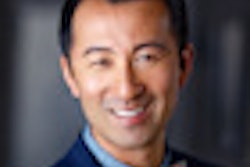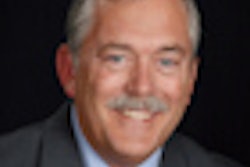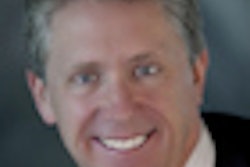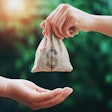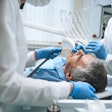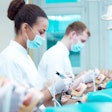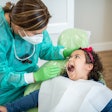
DrBicuspid.com is pleased to present the next installment of Leaders in Dentistry, a series of interviews with researchers, practitioners, and opinion leaders who are influencing the practice of dentistry.
We spoke with Ina Pockrass, co-founder of the Eco-Dentistry Association, the only professional dental organization devoted to supporting "green" dental practices. Pockrass has a Bachelor of Arts degree in philosophy from Mills College and received her law degree in 1985 from the Washington College of Law at American University.
 Ina Pockrass, co-founder, Eco-Dentistry Association
Ina Pockrass, co-founder, Eco-Dentistry Association
After working for several prestigious law firms over the course of 20 years, in 2003 she co-founded the first green dental practice, Transcendentist, in the U.S. with her husband Fred, a dentist in Berkeley, CA. In 2008 she co-founded the Eco-Dentistry Association (EDA), which today boasts more than 700 members in 45 states and 13 countries and has launched a number of consumer- and industry-oriented campaigns to "spread the word."
Pockrass shared her thoughts on the growing importance of eco-friendly dentistry and the advantages that "going green" can have on a dental practice -- from saving money and protecting the environment to enhancing patient loyalty.
DrBicuspid.com: How did the idea for the Eco-Dentistry Association evolve?
Pockrass: The idea for the EDA was a collaborative one between me and my husband who is a dentist. In 2003 we created the very first green dental office in the U.S., the Transcendentist office in Berkeley. And we were almost immediately approached by the Bay Area Green Business Program, which had been hoping a dentist would do this. So they sent inspectors from 10 different agencies to the office, and they were so excited by what they saw they asked if they could use us as a model to create standards.
Within a couple of years we started to get inquiries from dental practices all over the world asking what products we use, how we went green, and so forth. So we looked at how we could leverage the expertise we had gained in creating a green office model and effect a transformation, which is our goal. We found some extreme examples of waste and pollution we believe the dental profession is unaware of, and we saw a great need for an educational organization where we could share the expertise we had gained and develop best practices based on actual experiences in dentistry.
Is the eco-dentistry movement gaining momentum?
Quite so, and we are very excited. We founded the association in 2008 and now we have over 700 members in 45 states and 13 countries. We have a very active membership in Brazil, for example, which has two times the number of dentists as the U.S. And our social media reach is growing also; for example, we have over 2,200 followers on Twitter. And when you look at who is following us and is interested in our messaging, it is multifold: industry, dental offices, and also a significant segment of the relevant consumer population, such as the so-called "eco-moms": moms between 20 and 40 years old who read labels and care about what is being put in and on their children. This is an extremely vocal and very influential consumer group. So we have a very broad reach.
What are the EDA's goals in the next 12 to 24 months?
One of the things we just did on the consumer side was to enter into an alliance with a group called Practically Green that has about 25,000 members and uses gaming to create behavior change. So working with them we created the Eco-Dentistry badge, which consumers can earn by doing a number of things, such as going to an eco-friendly dentist, turning off the water during brushing, using a toothbrush made from recycled or renewable materials, and using oral care products that are free from chemicals, toxins, and alcohol.
We have similar consumer alliances in the works right now, and we are very committed to helping the public understand their role in encouraging their dentists to become eco-friendly and adopt eco-friendly practices. As consumers, we are voting with our pocketbook. So we have launched the "Green My Dentist" campaign, directed at consumers, that encourages them to visit an eco-friendly dentist. For example, we offer them a letter they can send to their dentists asking them to stop using conventional x-rays (and the related chemicals) and to switch to digital imaging.
On the professional end, we have three campaigns planned for this year. One is our "World Water Day Challenge," a contest among EDA members to see who can get the most patients to sign up for the "Save 90 a Day!" campaign -- as in, if you turn off the water while brushing your teeth, you will save 90 glasses of water a day. This is a way to help dental professionals connect with their patients based upon values. About 100 million U.S. consumers are considered wellness/lifestyle consumers. These are people who will keep their hygiene appointment even if it means going out to dinner one night less because they value health.
So the office that signs up the most people for this campaign will get a "goodie basket" of dental products donated by some of our industry partners. [On March 26, the EDA announced that Mary Trahar, DDS, of Annapolis, MD had won this year's challenge.]
Our second campaign this year is "High Time for High Tech," which emphasizes all the benefits -- monetary, practice wise, environmental -- that high tech represents for dental offices. Only 30%-35% of dental offices are using digital imaging, and even fewer are using digital charting, and we want to see those numbers flip. There is a one-to-one correlation between the high-tech choice and the eco-friendly choice, so getting that message out there is critical.
Our last campaign is "Go Green by 2013," which we will launch at the ADA annual session in October. This campaign emphasizes our GreenDOC (green dental office) certification program. We recognize that for the wellness/lifestyle consumer, authenticity is critical. We also recognize the need for independent third-party criteria that consumers can rely on that verifies that dental offices are truly green. So we have set up a point system, similar to LEED for buildings, which considers the built environment but also processes, materials, and office management.
Are there practical as well as environmental advantages to a dental practice going green?
Our association understands what the real-life pressures are in terms of overhead in running a dental practice. So we wanted to find out if it cost more to run a green office or if there were savings. We hired an independent consulting firm called Natural Logic and provided them with 14 different environmental initiatives that could be instituted in a dental office -- such as digital imaging, paperless charts, and reusable products -- and we asked them "what is the ROI?" And they determined that a practice would improve its bottom line by up to $50,000 a year by doing such things as switching from a chemical autoclave to steam sterilization. With a chemical autoclave a dental office spends about $600 a year on chemicals; with steam sterilization, you just have to use water.
We think one of the biggest advantages of having an eco-friendly office is it really does engender greater team and doctor satisfaction. We've surveyed our members, and they say they feel they are "doing good while doing well," because they know they aren't contributing toxic waste to the environment. When we opened Transcendentist in 2003, the city told us we were the first dental office that didn't require hazardous waste permits.
There are related benefits, as well. Going green really deepens patient loyalty. The values-based patient will connect more to a dental office that demonstrates it shares the values of that patient. We surveyed our members in 2010, and almost 90% of them had the same revenue from 2009 or an increase. In addition, 90% of them either added staff or retained their existing staff. These numbers are in great contrast to what was happening in the industry at large at that time.
What are the most common questions you are asked by dental offices looking into becoming more eco-friendly?
The most common question we get is "what products should I use?" This is why, about a year and a half ago, we launched our EDA Accepted Seal. We have a system and program developed to evaluate offices, and we developed a similar metric to determine whether products are authentically green. We look at the product itself and whether it helps dental professionals reduce waste and pollution and save energy and water. There are also criteria for the companies themselves. We give points to companies that have things like in-house recycling programs or support their employees getting involved in environmental projects in the community.
We highlight the products that have earned the EDA Accepted Seal on our website and in our presentations at dental meetings.
What can industry do to help dental practices become more eco-friendly?
I am encouraged by the level of innovation I've observed in the last three to four years. In 2007, at the various dental meetings we attended, there was literally nothing that was green. But in 2008-2009, we started to see some companies position their products as having eco-friendly benefits. And now you have digital imaging companies like Dexis taking out ads that emphasize how using digital imaging is better for the environment.
Also, they should emphasize innovation, such as LED operatory lights and waterless vacuum systems. A few years ago they didn't exist, but now multiple companies are selling them.
What are you most proud of in your role as co-founder of the EDA?
We are helping to create healthier, more enjoyable, more profitable dental environments for practitioners, teams, and their patients. Dental professionals are in these environments 30 to 40 hours a week, and our goal is to eliminate toxins in the office environment. So what helps me sleep at night is that I'm part of a movement that is creating environments that are healing and enabling these professionals to practice in an environment that mirrors the care they are providing.




